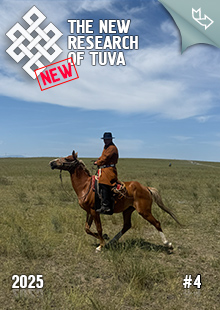 Scientists have determined that the most ancient domestic dog of Asia, as known up to date, lived about 34 thousand years ago in Altai, as the Center of public relations of Siberian section of RAN announced.
Scientists have determined that the most ancient domestic dog of Asia, as known up to date, lived about 34 thousand years ago in Altai, as the Center of public relations of Siberian section of RAN announced.
The conclusions of Siberian scientists were published on Thursday in the scientific journal PLoS ONE.
This dog skull was found in Bandits' Cave in Ust-Kansk district of republic Altai back in early 1970's.
At that time scientists concluded that the find is about 18 thousand years old.
In 2008 scientists requested their American colleagues at University of Arizona to perform a mass-spectrometer dating of a bone fragment from the skull; the lab established that the remains are about 34 thousand years old.
To verify the accuracy of the data, Siberian scientists sent samples of the dog skull to experts from Great Britain and Holland; these confirmed the age of the find.
Today, two ancient dogs are known in the world - the one found in Altai, and a dog whose remains were found in a cave in Belgium. The remains of the Belgian dog are a little bit older - about 36,500 years.
An animal whose remains were discovered at Yeniseyevichi camp site in Bryansk region was believed to be the oldest dog in Asia until now. The remains are dated to 17 thousand years.
According to morphological analysis, the Altai dog was clearly distinct from wolves present at that time. The skull form shows obvious changes(that is considered an important criterion of separation of domestic dog from its wild ancestors); which is evidence that 33-34 years ago the process of domestication of these animals was well on its way in the Altai," as the center of public relations of SO RAN announced.
As senior scientific worker of the Sobolev Institute of Geology and Mineralogy of SO RAN, Yaroslav Kuzmin, believes, "the decrease of degree of sedentariness of humans, which was absolutely necessary for domestication of dogs, as the climate worsened before the onset of the maximum of last global glaciation, which began about 26 thousand years ago, rendered the process of domestication impossible. Only as warmer climatic conditions (17-18 thousand years ago) arrived, were people again able, and this time finally, to domesticate the dog - the first domestic animal."

